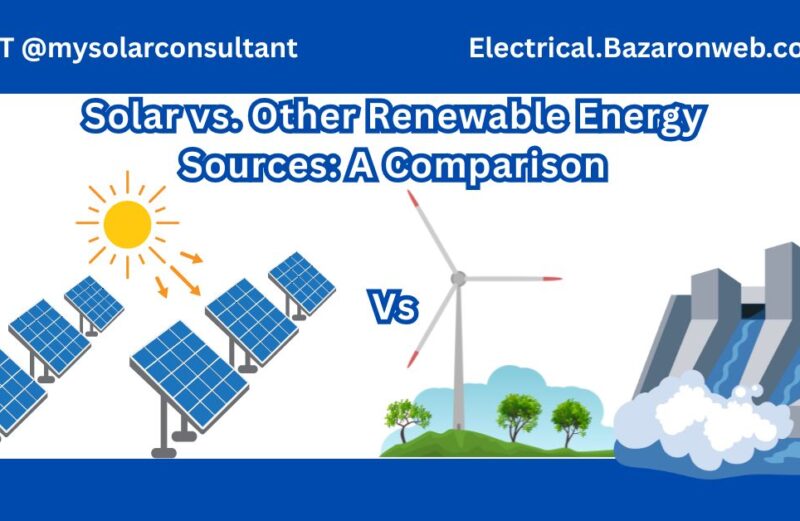As the world races to cut carbon emissions, renewable energy stands at the center of the transition. But how does solar energy stack up against other renewables like wind, hydro, and biomass?
After working on installation of many type of Renewable Energy Power Plants In this blog I am sharing some insights. Let’s explore their strengths, limitations, and roles in building a sustainable future.
☀️ Solar Energy
- How it works: Converts sunlight into electricity via photovoltaic (PV) panels.
- Strengths: Easy rooftop installation, low maintenance, scalable from small homes to large solar farms, quick installation.
- Limitations: Power depends on daylight and weather; needs storage (batteries) for nighttime use.
📊 Best suited for distributed generation and urban rooftops.
🌬 Wind Energy
- How it works: Wind turns turbines to generate power.
- Strengths: High efficiency; turbines can produce power day and night if wind is available.
- Limitations: Needs large open spaces; can face community resistance over noise and aesthetics; output varies with wind speeds.
🌾 Ideal for rural or coastal regions with strong wind resources.
💧 Hydropower
- How it works: Moving water turns turbines in dams or rivers.
- Strengths: Reliable and controllable (especially large dams); excellent for baseload power.
- Limitations: Environmental impact on rivers and ecosystems; limited new sites in many regions.
🏞 Dominates renewable power worldwide, but expansion is often constrained.
🌱 Biomass
- How it works: Organic waste and crops burned or digested to produce energy.
- Strengths: Can reuse agricultural waste; dispatchable power (can generate anytime).
- Limitations: Potential competition with food crops; emissions if poorly managed.
🔋 Best used locally with sustainable feedstocks.
⚡ How Solar Fits In
Solar’s key advantage is accessibility:
- Homeowners, businesses, and cities can install it anywhere with sunlight.
- It democratizes energy production, lowers grid strain, and cuts transmission losses.
Paired with batteries, solar helps stabilize grids and complements other renewables.
✅ Final Thoughts
No single renewable source can solve climate change alone. Solar, wind, hydro, and biomass each have roles in a balanced, low-carbon energy mix.
Solar shines because it’s scalable, flexible, and fits easily into modern lifestyles—making it a vital part of a sustainable future.
Written by Ankit Srivastava
Electrical Engineer | Experience in a Global ESG & Sustainability Consulting Firm | Passionate About Renewable Energy Transitions

